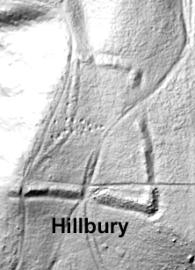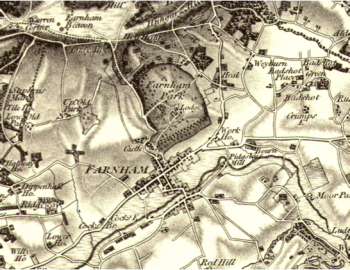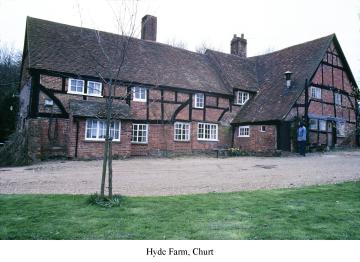Research & Fieldwork Reports - by date of work
The articles below record research and fieldwork undertaken by the Society. Many have not been published elsewhere. Click on the item header or the 'Read more' link to read the complete article. The articles are arranged in descending order of the work done, NOT the date of publication.
A Roman site on Frensham Manor, Frensham 2001
Trial trenching in fields at Frensham Manor (centred SU 8396 4045) in 2001 located a Roman occupation site which survives below plough soil level and would appear to represent the remains of a small farmstead dating from the late 1st to the 3rd centuries AD. Finds of redeposited fragments of highly fired clay flooring point to the presence of a kiln in the immediate vicinity and metal detector finds from adjacent fields are indicative of further Roman activity in the area.
Hillbury, Puttenham topographical survey 2001
Hillbury Camp, on Puttenham Common, is a univallate earthwork, listed, on no clear grounds, as Iron Age in the county Historic Environment Record and by English Heritage. The camp (SU 9115 4680) is sited at the extreme west end of an east/west sandstone ridge, covers about 2ha (5 acres) and has a defensive circuit consisting of a single bank and ditch earthwork that runs on the fort’s north, east and south sides.
For more information please view the attached report.
Farnham Park Survey 1998
In 1997 Waverley Borough Council, the landowner, commissioned a preliminary survey into the historical and archaeological background of the land that forms the New or Little Park (now Farnham Park), just to the north east of the town of Farnham, in Surrey. The Park, which is a public open space, has been the site of a number of finds of important antiquities in recent years.
Watching brief at 46 Downing Street, 1996
A watching brief by K D Graham of SyAS on the works for a rear extension revealed no features or finds of archaeological interest apart from a carved stone block with the initials of James Newland Baker who was responsible for constructing the walls in the 19th century.
Watching brief on land adjacent to 4 Hampton Road, Farnham 1996
A watching brief by K D Graham of SyAS on the construction of a house on this site revealed no features or finds of archaeological interest. A metal detector survey also produced no material earlier than the 19th century.
31 Lower Church Lane, Farnham 1995
Building works within the standing building, which dates to the late 16th century, revealed a number of features subsequently recorded by D Graham. A small mortar-lined conical pit containing solidified lead was identified, presumably the remains of a furnace associated with lead working. No dating evidence was recovered, but the furnace must pre-date the standing building and appeared to be later than a stone floor, apparently of 13th century date, which was also recorded. From evidence elsewhere in the town, it is thought likely that the furnace dates to the early 16th century.
Hyde Farm, Churt watching brief 1995
Building works were carried out during 1994/1995, the main element of which was to add an extension to the west end of the house and to lay a new floor in the 'Well room'. Since the latter operation involved lifting the existing concrete floor and removing 50-60 cm of underlying deposits, the authors were asked by Waverley Borough Council and Surrey County Council to undertake an archaeological watching brief on the works.
Watching brief at 74 Castle Street, Farnham 1995
A watching brief by K D Graham of SyAS on works for a rear extension confirmed that the site had previously been extensively disturbed and no trace survived of the 13th century pottery kiln identified in 1991.
For more information please view the attached report
Evaluation at West Surrey College of Art and Design, Falkner Road, Farnham 1994
As a result of this work, 1 Roman coin and 1 piece of RB roof tile was found with a very light scatter of medieval and post-medieval pottery and modern building debris. Apart from the pit and redeposited material in trench 25, no archaeological features were found.
A metal detector survey was carried out by members of a local club, who recovered a 17th century trader's token, but otherwise only found post-medieval (mostly 19th and 20th
century) material.



